- Home
- Neal Asher
Polity Agent ac-4
Polity Agent ac-4 Read online
Polity Agent
( Agent Cormac - 4 )
Neal Asher
From eight hundred years in the future, a runcible gate is opened into the Polity and those coming through it have been sent specially to take the alien maker back to its home civilization in the Small Magellanic cloud. Once these refugees are safely through, the gate itself is rapidly shut downbecause something alien is pursuing them. The gate is then dumped into a nearby sun.
From those refugees who get through, agent Cormac learns that the Maker civilization has been destroyed by pernicious virus known as the Jain technology. This, of course, raises questions: why was Dragon, a massive biocontruct of the Makers, really sent to the Polity; why did a Jain node suddenly end up in the hands of someone who could do the most damage with it?
Meanwhile an entity called the Legate is distributing pernicious Jain nodes and a renegade attack ship, The King of Hearts, has encountered something very nasty outside the Polity itself.
Polity Agent
[Agent Cormac 04]
Neal Asher
Prologue
The Polity is, in terms of human history, a huge and unique political entity. Under the benevolent rule of artificial intelligences it is ever-expanding in the galactic disc. Many see it as a precursor to Utopia, possibly eternal. However, during its initial expansion, artefacts of ancient alien civilizations began to turn up, and to the dismay of the Utopians we’ve since learned just how small is our dominion. Slowly, evidence has accrued to show that three distinct alien races occupied our portion of the galaxy before us, and now they are gone. It’s depressing; reality often is. So, ignoring the other two for the moment, let me concentrate on one of those races. What do we know about those we have named the Jain?
Well, very little. The few artefacts remaining of their civilization date back prior to five million years ago, when the Jain obviously became extinct or disappeared. We don’t know what they looked like, though there is some suggestion they might have been hot-world aquatic. We do know their civilization extended over many star systems, and that they possessed the technology to move planets and reform ecologies in ways as yet untried here in the Polity. We do know they used a highly sophisticated nanotechnology. But frankly, everything else claimed to be known about them was opinion and speculation, until recently.
The general consensus among experts was that the Jain were warlike and that their own technology wiped them out. The few fragments recovered of this ‘Jain technology’ are sealed in a self-destruct room in the Viking Museum on Luna. But why this consensus? Conspiracy theorists have it that the AIs know a lot more than they are telling, since their search for further artefacts of this kind absorbs a substantial portion of the Earth Central Security budget. Whichever way you look at it, recent events have shown that the dangers represented by Jain technology have not been underestimated.
The idea of a ‘Jain node’ was a product of one of the wilder theories until a few years ago—the whole technology of that alien race contained in something small enough to drop into one’s pocket. There ensued a scramble to discover such an item, but none were found at the time and the theory fell into disfavour, its proponents dismissed as nutjobs. Unfortunately the Jain node has recently proved to be a reality, and a rather unpleasant one at that.
Earth Central Security has not been forthcoming about the events surrounding its discovery, but there are still planetary systems under quarantine, and many unsubstantiated rumours of megadeath involved. However, I did manage to get something from a nameless source concerning a Jain node and the purpose of the technology it engenders.
It seems a node will only react to a living intelligent organism, which will then become both its host and its master. The nanotechnology propagating from this relationship is mycelial in nature, and capable of penetrating all our present technologies. Horribly, it seems able to take control of living beings in the same way. Godlike power, you would think, but, no, it is a poisoned chalice. Unless he manages to exercise total control, the user will end up being the used, the technology continuing to spread and destroy while he, the host, is absorbed as merely a component of it. Even managing to control it and evading such fate is not enough, since Jain tech is programmed, like an annual plant, to go to seed, and in the process tears its host apart in order to create more Jain nodes, which in turn will be spread to further hosts. The opinion of my source was that this diabolical creation serves one purpose only: genocide.
- From ‘How it Is’ by Gordon
Over the centuries, the huge Celedon station’s original shape, like a spinning top five miles across, had become shrouded by accretions. Now near the end of its journey and its useful life, it was slowing from one eighth of light speed on this particular edge of the Polity sphere because the stars here were dispersed and intergalactic space lay beyond. Its controlling artificial intelligence, Celedon, viewed those aboard through its many camera eyes. The resident and transitory populations had been dropping away for some years simply because they had come to realize there existed so little of interest out here. The usual tourists still arrived, but after taking a look around they soon departed. Various corporations still maintained offices and factories in the rim units, but their number decreased steadily and no new ones had established a foothold here in the last two decades. Even the low-grav and vacuum-adapted outlinker humans, living here from the beginning, were starting to trickle away to more lively stations. There were now many empty rooms, deserted corridors and concourses, and Celedon, having shut down three of the five runcibles aboard simply because these extra instantaneous gateways in from other destinations were no longer required, viewed with chagrin the prospect of the next two boring decades before the station reached its final destination.
Eventually Celedon would put the station in orbit around a star already selected, and there it would remain forever as a static outpost of the Polity. The AI had yet to decide what then to do. Perhaps a massive expansion project might spark a renewal of interest: the station could be opened out and enlarged and bases established on the single Venusian world orbiting the selected sun. Maybe that same world could be terraformed? Those options were all available—or Celedon could itself abandon this structure that was the body into which it had been born, and leave it to the control of subminds and automatic systems. Certainly some of its own subminds would be glad of the opportunity for independence, and a chance at expansion of both their capacity and responsibility. As it mulled over these possibilities, the AI was casually watching a group of children playing a game of zero-G handball, when the information package arrived through runcible C.
‘Ah, three impossible things before breakfast.’
‘What’s that?’ asked a drone located in the embarkation lounge of that runcible.
Celedon turned its attention to the individual concerned: an independent drone, fashioned in the shape of a spider, that the AI had itself employed at the inception of this station. The drone had originally been manufactured as part of a strike force for clearing enemy stations during a war between the Polity and some particularly vicious aliens named the Prador. Celedon remembered sending it to the same lounge five years ago to oversee the closing of that area, and that it had put itself into shutdown mode ever since. It rested on the wide expanse of blue carpet moss, its shiny motionless legs forming a cage around its main body, then those legs slowly started unfolding.
‘The three impossible things are these, Arach. I just received a message sent through a runcible that it is not due to go online for eight hundred and thirty years; from a location the ship containing the components of said runcible has a hundred thousand light years yet to travel before reaching; from a runcible technician who should still be in coldsleep aboard said ship.’
‘And you’re telling me this why?’ Arach asked.
‘The information package arrived through Runcible C. You were merely woken by a safety protocol, and so chanced to overhear me. You may shut yourself down again if you wish.’
‘After hearing that?’ The spider-drone danced in a circle, its eight eyes emitting an infernal glow. ‘You have to be kidding.’
Arach, Celedon remembered, had expressed a degree of boredom before shutting itself down. Not unsurprising considering its antecedents.
Celedon returned its attention to the package received. The U-space coordinates were correct and the runcible signature correct. The AI opened the package and quickly scanned the information it contained, then, realizing the seriousness of the situation, it diverted a full third of its capacity to studying the data more closely, before sending a copy, via Runcible D, to Earth Central—the Polity’s ruling artificial intelligence.
‘Hostile contact protocol Starfire,’ the distant Earth Central AI replied.
Celedon immediately contacted its drones in the three shutdown runcible lounges: the spider itself, the fly, and the pill bug — all erstwhile products of that ancient war effort. ‘Runcibles coming back online. Open all lounges and direct all humans to the runcibles, immediately. You may use non-fatal coercion. Fly, your area is to remain zero-G. Stand by.’
The AI observed lights coming on in the various empty lounges, doors opening, and the nascent shimmer of Skaidon warps growing between the bull’s horns of Runcibles A, B and C. In lounges B and C, Celedon turned the gravplates back on, bringing various objects clattering to the floor. At the same time it put up on all bulletin boards, EVACUATE STATION, ALL INCOMING TRAFFIC IS ON DIVERT, and sent the same message to all personal coms and augmentations, or by voice in private quarters.
‘The sender chose this station for a reason,’ Celedon observed.
‘Certainly,’ EC replied. ‘It is the least visited and the most uninhabited.’
Inevitably, the station’s residents sent thousands of queries. The most hysterical were from the outlinkers who had made this place their home for a hundred years, for, being zero-G adapted humans, where they might be evacuated to could be a problem. The transient travellers, however, were soon packing their luggage, if not obethently heading towards the runcibles. Celedon itself noted a group of three tourists, who had been exploring a deserted part of the station, now being shepherded towards Runcible C by Arach, the spider-drone. Though they objected loudly, they were moving fast, especially after Arach informed them what non-fatal coercion could mean, and began lasering the carpet right behind them.
‘Least collateral damage by feedback from a time-inconsistent runcible connection?’ Celedon suggested. A runcible connection between the past and the future was considered impossible by many humans. The AIs new better.
‘Precisely,’ Earth Central replied.
‘So you wish me to fully connect?’
‘Yes, but only to Runcible A, and not until you are positioned in low solar orbit with all preparations made that the protocol implies.’
‘Of course.’
The AI maintained its link with Earth Central while making those preparations. Internal scans showed that the original station structure remained as sound as ever. However, expanding that scanning process, the AI found that many of the additions accumulated over the years were not designed to withstand what must ensue. Celedon recorded, formatted and loaded 200 subminds to 200 skeletal Golem and assigned them to expediting the evacuation of those additional structures, making the ones constructed over the rim fusion engines a priority, and then observed the skinless androids, like chromed skeletons, come marching out of storage. It assigned system subminds already initiated to fielding the queries and protests from established residents and companies, then turned its own attention to the outlinkers.
‘Chief Engineer Draesil,’ it said, watching the man through the multiple eyes of a welding robot.
The man was tall, painfully thin, his skin coloured and patterned like the flesh of a kiwi fruit. His hair was black and he wore a tight body garment covered in pockets and strapped-down tools. In this zero-G environment he hung with one arm hooked through a wall loop, peering about himself at the activity of his multicoloured kind.
‘What the hell is going on?’ he asked, his gaze focusing on the nearby robot.
‘Your people must evacuate the station as quickly as possible.’
‘Yes, I think I kind of understood that, but why? Buffer failure or fusion breach?’
‘Neither. This station will be undergoing fusion acceleration burn in fifty-three hours. Though many of those aboard would be able to survive the forces involved, your own kind would not.’ Outlinkers, being adapted to low gravity, were fragile.
‘You still haven’t told me why,’ Draesil snapped.
The AI felt a moment of chagrin. It had noted over its long years of stewardship of this station how humans readily trusted AIs until orders from such entities impinged directly on their lives. Then they started voicing questions and doubts about the abilities and motives of intelligences a thousand times more powerful than any unaugmented human. Thus, in moments of catastrophe, when hard decisions needed to be made quickly, all AIs included in their calculations a human death toll governed by a factor called ‘pigheadedness’.
‘A hostile contact protocol has been ordered by Earth Central. You and your people must all proceed immediately to Runcible Gate A, which will remain a zero-G area, with whatever belongings and personal effects you can carry. All resulting pecuniary losses will be reimbursed.’
Draesil bowed his head. ‘What’s coming through?’
‘I cannot discuss that.’
‘And where are we going?’
‘You will be transmitted to another station’s low-G section. Should it be possible after this crisis, you may return here to me. Otherwise alternative station space will be provided.’
Draesil nodded and pushed himself away from the wall, speaking into his collar comlink as he tumbled freely through the air. ‘This is the real thing, people. We have fifty hours to get out of here. Grab your stuff and head for Runcible A.’
Celedon then turned its attention to other matters, glad that at least the humans in this small section of the station had become someone else’s headache. Seven hundred and thirty people had already gone through the runcibles. The lounges of D and E were becoming very crowded, but now the spider and the pill bug arrived and began directing people to the monorails which would take them around the station’s main disc to the other runcibles opening up. The alacrity with which the crowd obeyed those drones, Celedon put down to atavistic fears: few humans would be inclined to disobey the orders of an iron spider with a leg-span of three yards.
Now, the engines. The main fusion engine lay along the axis of the station, protruding into space below it, so was free to fire up at any time, but Celedon needed to utilize the rim engines now. It observed one area, positioned over one of those four engines, now clear of human occupants, and Golem in the process of leaving too. Celedon began closing the airlocks, but then, after noting something through its cameras, reopened a lock and sent one of the Golem back inside. It shortly returned carrying a large fat cat under its arm, which it handed to a distraught woman who came running back to collect it. Celedon emitted a silicon sigh and closed the final airlock.
The rim engines were of an old design fuelled by deuterium and tritium microspheres. Their tanks were full of liquid deuterium and tritium talc, and had been so for a hundred years. Diagnostics detected no faults, therefore this particular engine stood ready to ignite, but not yet. The Celedon station possessed a slight spin, not for centrifugal gravity, that problem having been overcome long ago with gravplates, but to fling away any docked spacecraft—though the last one of those had departed thirteen years ago. Checking with an astrogation program, the controlling AI, Celedon, waited the required twenty-two minutes and seven seconds.
Now.
White fire stabbed out of the open side of the hardfield box, and then out of the layered ceramo-carbide combustion chamber. It cut through rooms previously occupied, converted walls, floors, ceilings, coffee tables and sofas to incandescent gas, and blasted out into vacuum. Spearing out from the station edge, it burned red-orange. Mr exploded into space, wreckage followed. The conglomeration of structures peeled away, burst asunder, was flung away by the station’s spin. Celedon noted fire alarms and systems coming online, and going off just as quickly as they collapsed. And then Celedon, the station, slowly began to tilt.
Shutdown.
The fire went out. In two hours’ time a stabilizing burn would be required from rim engine 4, which gave the Golem plenty of time to clear out the last sixty people still within its vicinity. Gazing internally Celedon observed the outlinkers releasing themselves from wall-holds after acceleration ceased. They had not liked that sensation at all, but it made them move much faster towards Runcible A.
Celedon separated out one of the many communications sent to it and replied ‘Forty-seven hours’ to Draesil’s query. Shaking his head in annoyance, the man himself followed a group of outlinker children through the runcible.

 The Bosch: A Novella (Polity Universe)
The Bosch: A Novella (Polity Universe) Jack Four
Jack Four Lockdown Tales
Lockdown Tales The Warship
The Warship Line War
Line War Total Conflict
Total Conflict The Departure
The Departure Owner 03 - Jupiter War
Owner 03 - Jupiter War Polity Agent
Polity Agent Prador Moon
Prador Moon The Technician
The Technician Hilldiggers
Hilldiggers Gridlinked
Gridlinked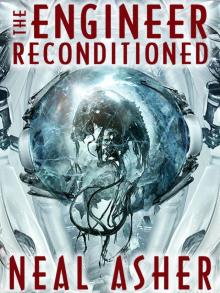 The Engineer ReConditioned
The Engineer ReConditioned Dark Intelligence
Dark Intelligence The Soldier: Rise of the Jain, Book One
The Soldier: Rise of the Jain, Book One Shadow of the Scorpion p-2
Shadow of the Scorpion p-2 The Skinner
The Skinner The Soldier
The Soldier The Gabble p-13
The Gabble p-13 The Gabble and Other Stories
The Gabble and Other Stories The Parasite
The Parasite The Other Gun
The Other Gun The Line of Polity
The Line of Polity Zero Point (Owner Trilogy 2)
Zero Point (Owner Trilogy 2) Gridlinked ac-1
Gridlinked ac-1 Prador Moon p-1
Prador Moon p-1 Infinity Engine
Infinity Engine Mindgames: Fool's Mate
Mindgames: Fool's Mate Orbus
Orbus Africa Zero
Africa Zero Line War ac-5
Line War ac-5 Brass Man
Brass Man The Departure to-1
The Departure to-1 Cowl
Cowl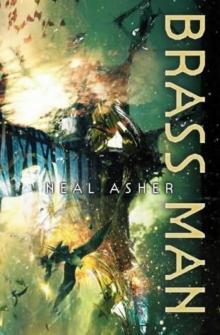 Brass Man ac-3
Brass Man ac-3 Hilldiggers (polity)
Hilldiggers (polity)![Greg Bear - [Eon Trilogy 1] - Eon (rescan) (v1.0) Read online](http://i1.bookreadfree.com/i2/04/08/greg_bear_-_eon_trilogy_1_-_eon_rescan_v1_0_preview.jpg) Greg Bear - [Eon Trilogy 1] - Eon (rescan) (v1.0)
Greg Bear - [Eon Trilogy 1] - Eon (rescan) (v1.0)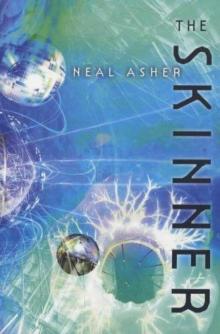 The Skinner s-1
The Skinner s-1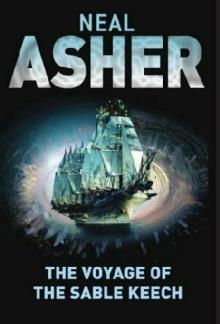 The Voyage of the Sable Keech s-2
The Voyage of the Sable Keech s-2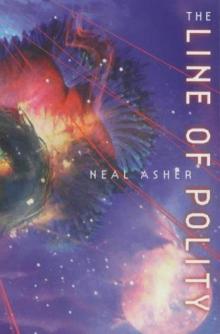 The Line of Polity ac-2
The Line of Polity ac-2 War Factory: Transformations Book Two
War Factory: Transformations Book Two Polity Agent ac-4
Polity Agent ac-4